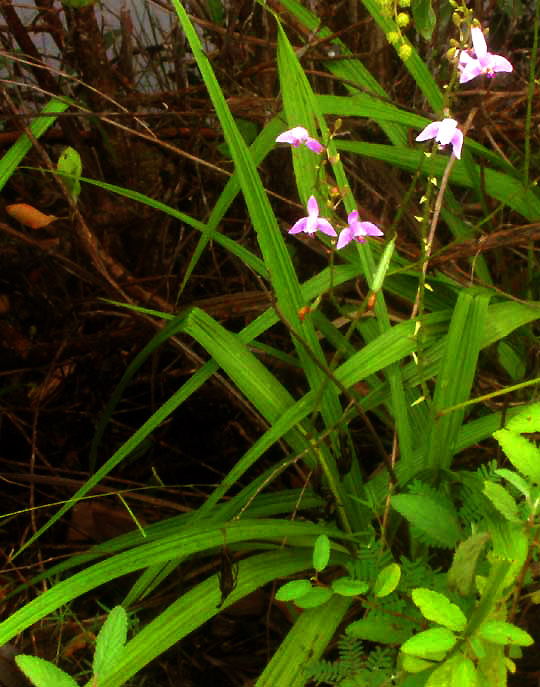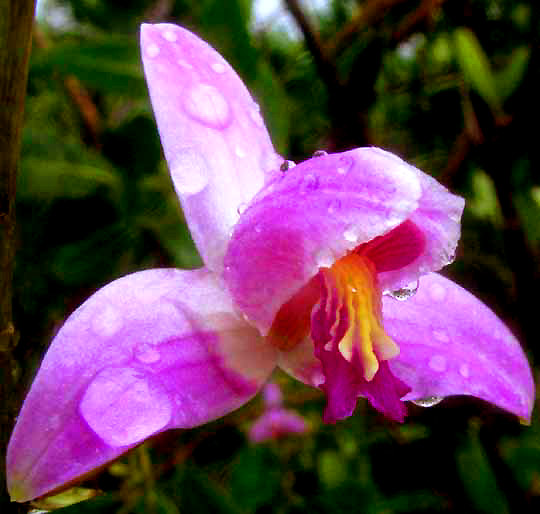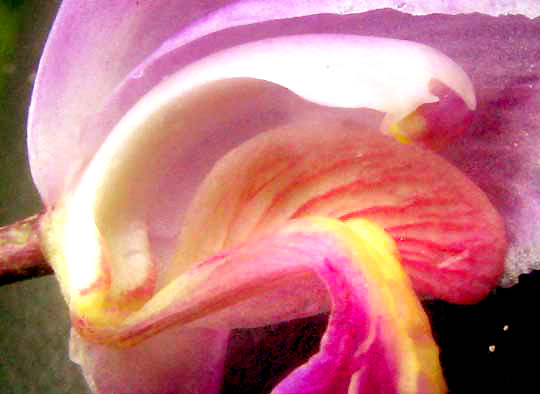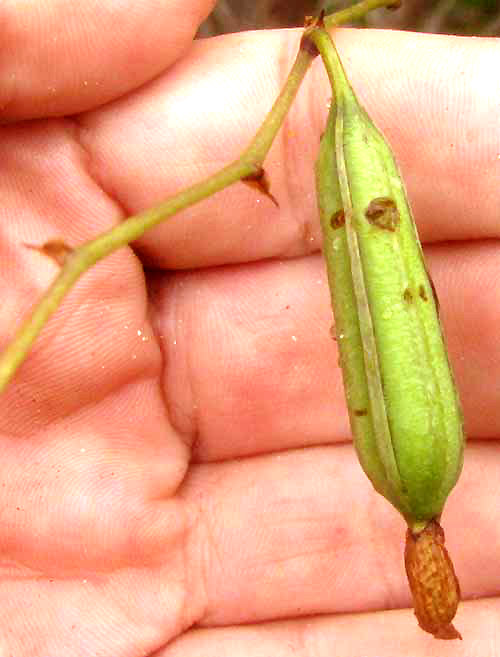Excerpts from Jim Conrad's
Naturalist Newsletter
from the October 9, 2011 Newsletter issued from Mayan Beach Garden Inn 20 kms north of Mahahual; Caribbean coastal beach and mangroves, ~N18.89°, ~W87.64°, Quintana Roo state, MÉXICO
ORCHID AT THE MANGROVE'S EDGE
Along a levee's weedy sides right where the paved road entered the mangrove a small colony of terrestrial, pink-flowered orchids showed up. You can see one knee-high clump with stiff, tough, palm-like leaves below:

Up close the flowers' main field marks included three rosy sepals spreading widely from the flowers' bases, like a trillium. In the flower's center, notice how the petals form a "hood" over the "column," or "gynostemium" (fused male and female sexual organ found atop the "lip"), and how that three-lobed lip's upper surface is so deeply ridged and frilly, as shown below:

A lateral view of a flower with side petals removed showing the above details from a different view is show below:

Fruit pods already dangled from some stalks, as shown below:

Among the English names for this species are Purple Bletia, Pine Pink, and Sharp-petaled Bletia. It's BLETIA PURPUREA.
Though all our flowers displayed the same rosy color shown the photograph I read that flower color ranges from pink to deep purple, to almost white. The plants are thought of as terrestrial or semi-epiphytic.
Purple Bletia is a fairly widely occurring species, found from southern Florida -- where it's listed as Threatened -- south through Mexico, Central America to Brazil in South America. It specializes in living in pinelands, hammocks, humus atop limestone, and in swamps like our mangroves, where often it's found on logs, stumps, and tree bases well above the high water mark. It flowers sporadically all year.
A vegetative peculiarity of the species is that it produces pseudobulbs at the base of their leaves, but they're subterranean. Pseudobulbs are succulent water-storage growths some orchid species produce while others don't.
Interestingly, Purple Bletia is known to sometimes produce flowers that don't open, resulting in self-pollination instead of insect-facilitated cross pollination. A writer in Florida says that "many, many" Purple Bletias found in a field there were closed, or "cleistogomous" and thus self-pollinating.
The suggested cause of this high rate of cleistogamy was that southern Florida lies at the extreme northern point of Purple Bletia's distribution and as such may lack enough appropriate pollinators for effective pollination. Through normal evolutionary processes the species may have adapted to the situation by trending toward a high rate of cleistogamy, despite the fact that such a strategy results in clone-like populations with reduced genetic diversity.